Canary Islands Welcome to the moon!
Our first leg on the Atlantic, island hopping in the Canary Islands, final preparations on the boat and the arrival of the Atlantic crew. And the story of how a failed anchor manoeuvre gave us a major setback.
We have made it!
After 4.5 days on the Atlantic, we arrive at our first anchorage in the afternoon, safe and sound and super happy. All in all, the passage went really well, the atmosphere was good and the crew felt (mostly) at ease. The last night was a bit uncomfortable, with winds over 30 knots and higher, steep waves. But everyone coped really well and we finished the passage with an average speed of 5.9 knots, which is really good for us. So we drop anchor and dive into the Canary Islands.
La Graciosa
That's the name of our first stop. A largely uninhabited island with two small villages and, for us, a beautiful volcanic landscape. It's good to be able to stretch our legs. Thierry continues to practise with the wingfoil, as there is ALWAYS wind here and he is making great progress. Our hitchhiker Dan is leaving us here because he has found another boat that will take him a little further. Bon voyage Dan, see you sometime, somewhere! 😊 Together with Bernie, we have dinner in the only open restaurant and enjoy a great evening. After a few days, we move on to the next island.
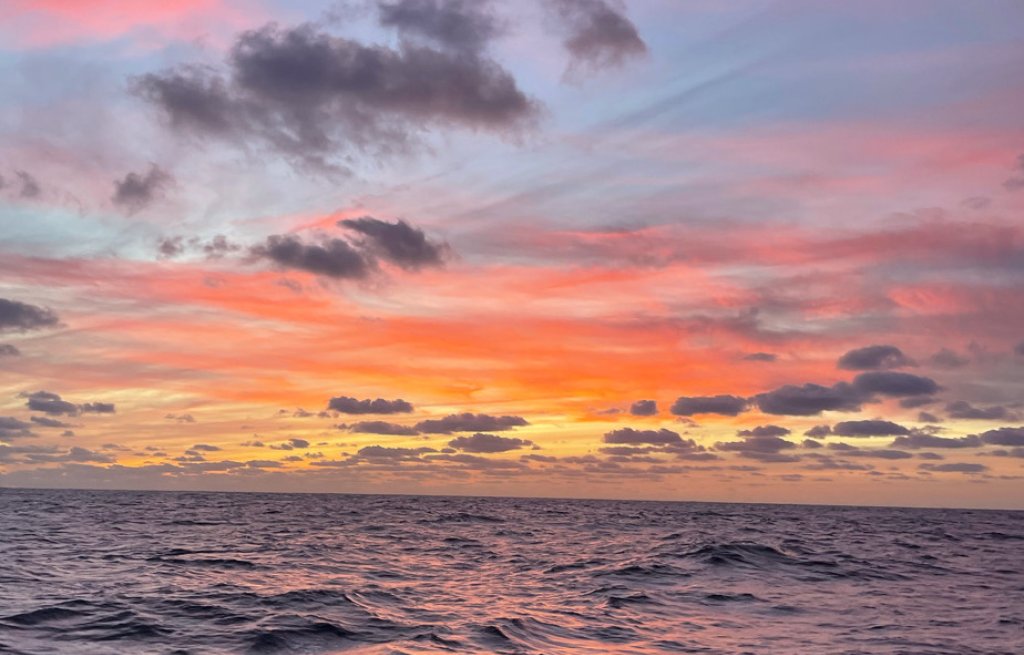
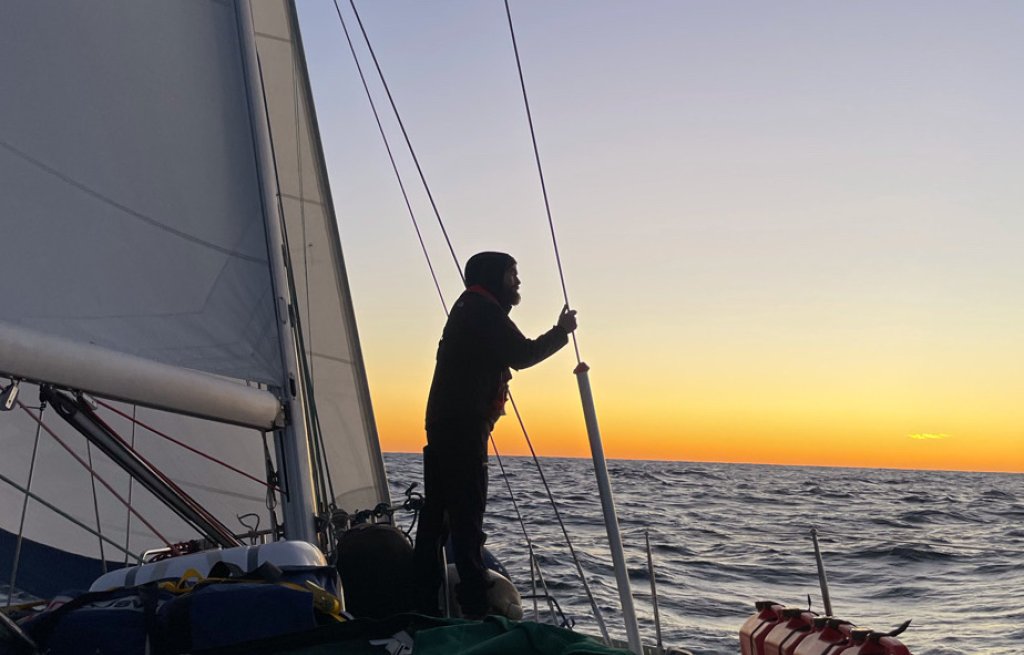
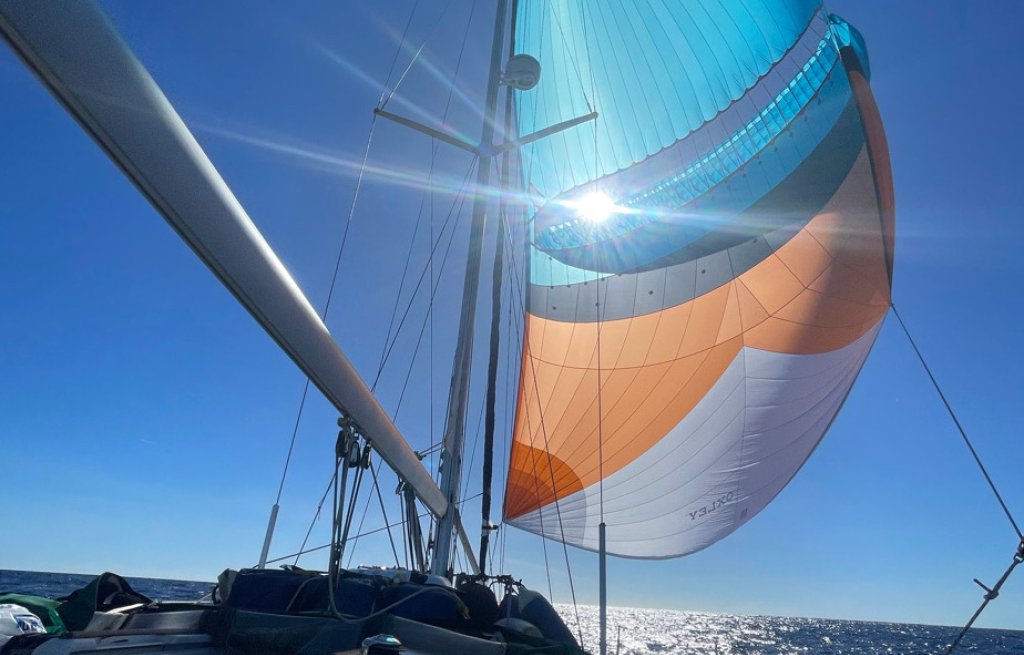
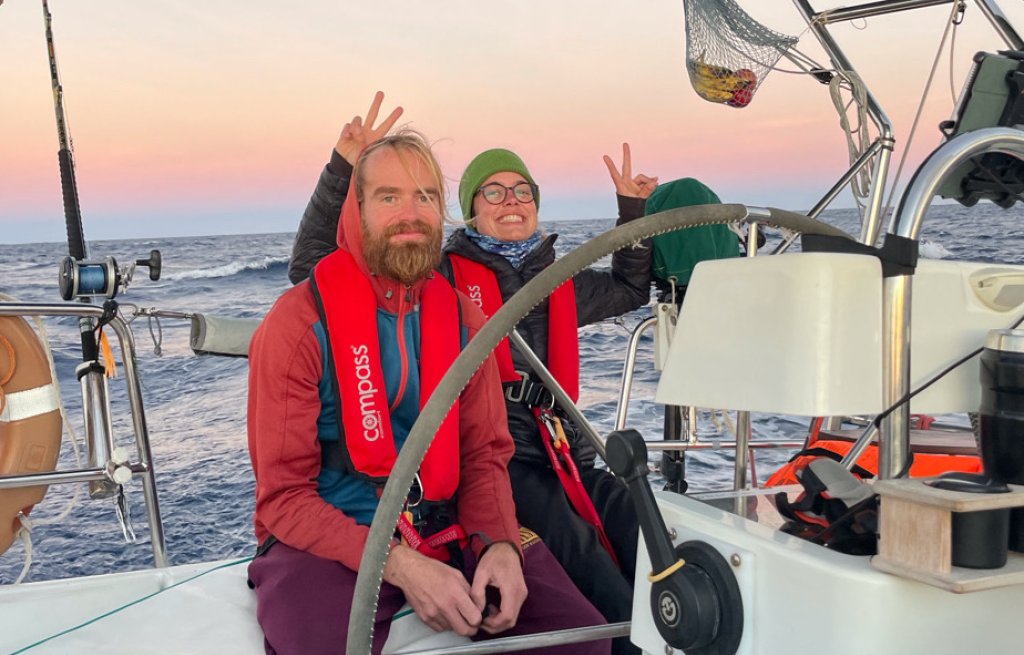
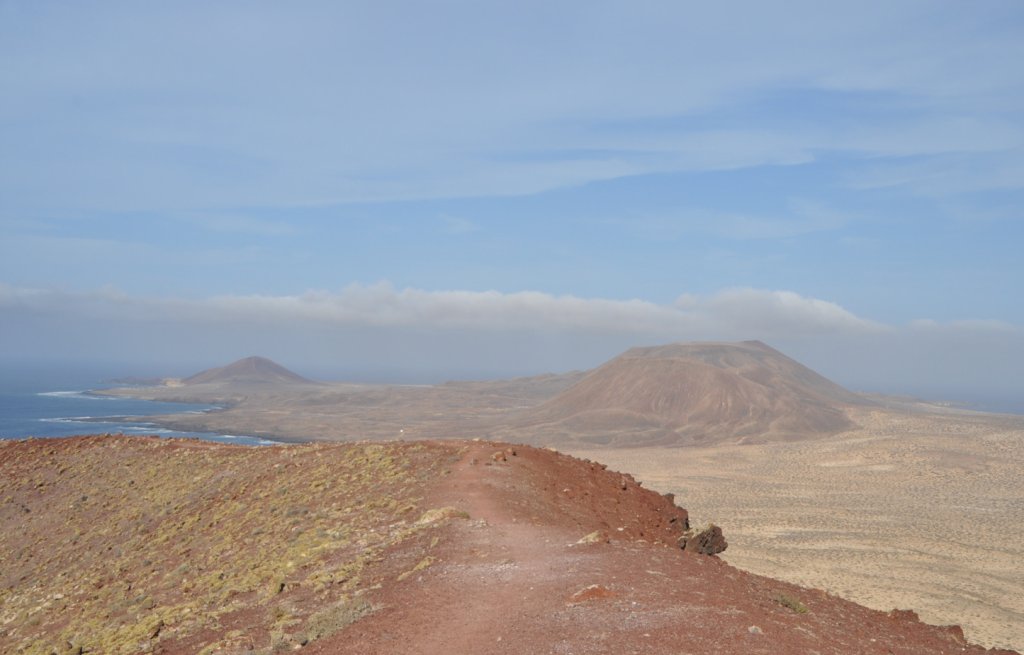
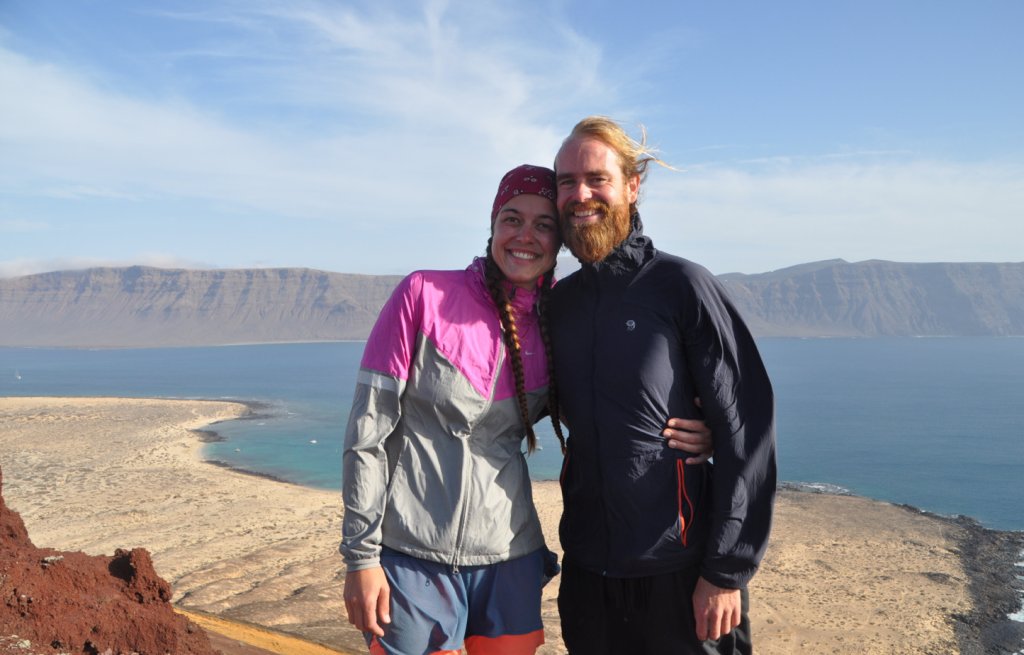
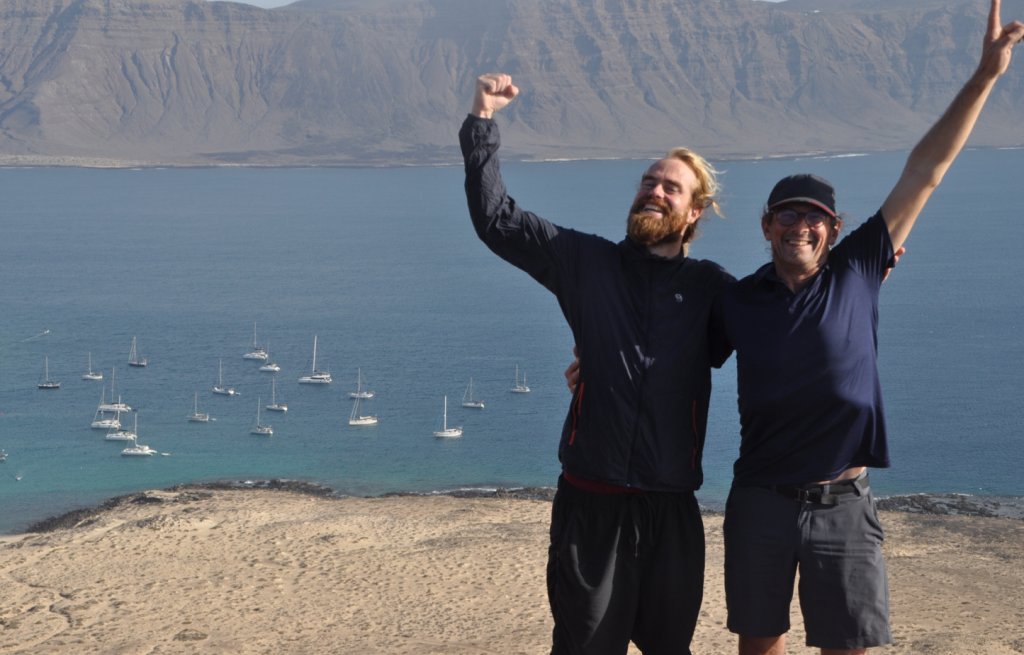
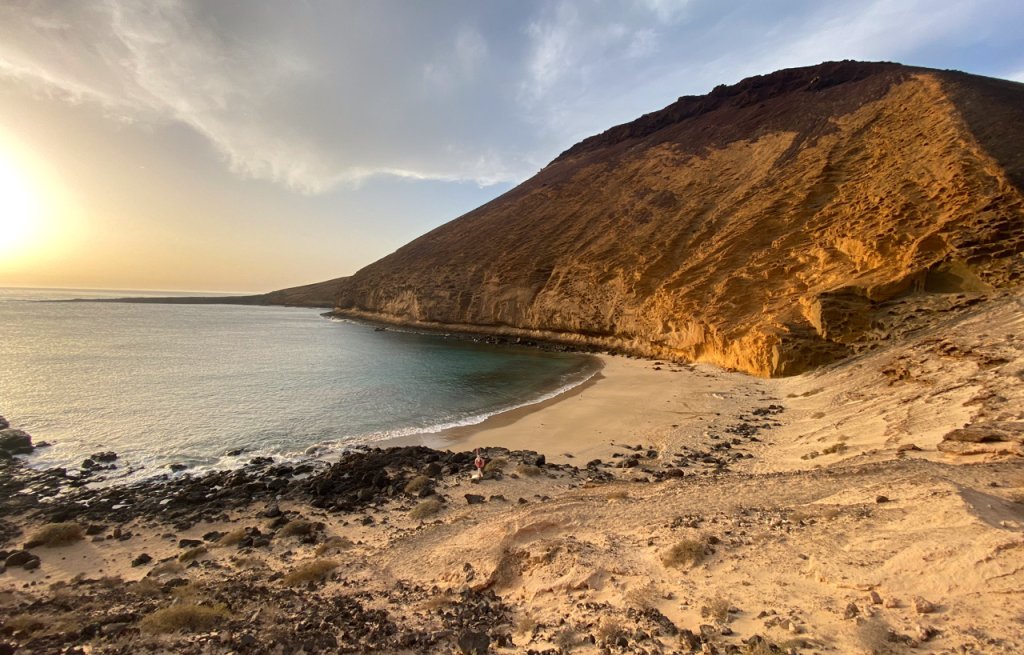
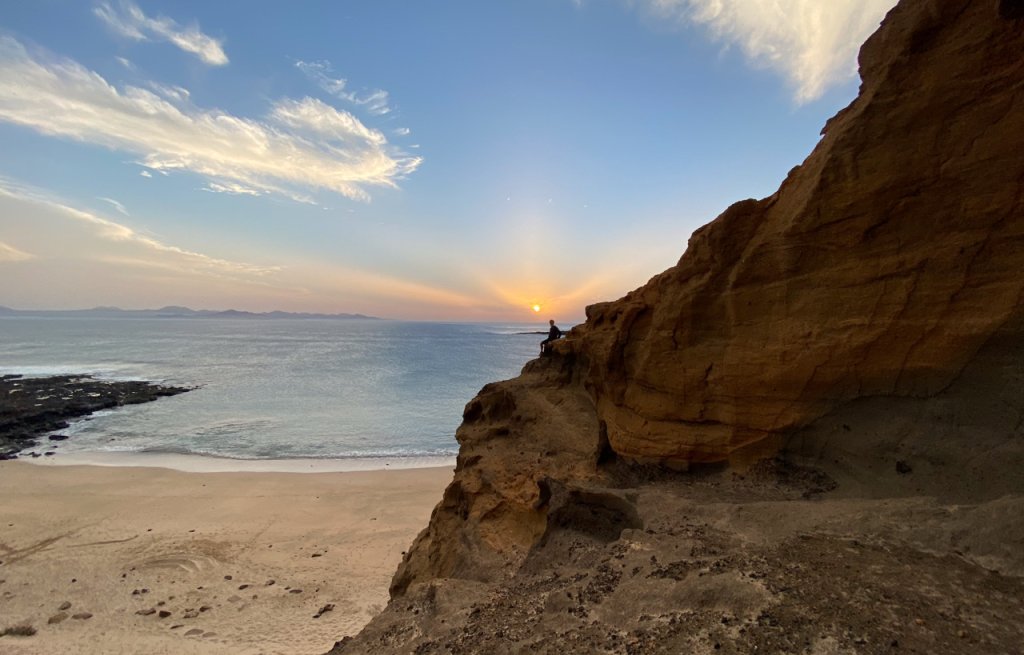
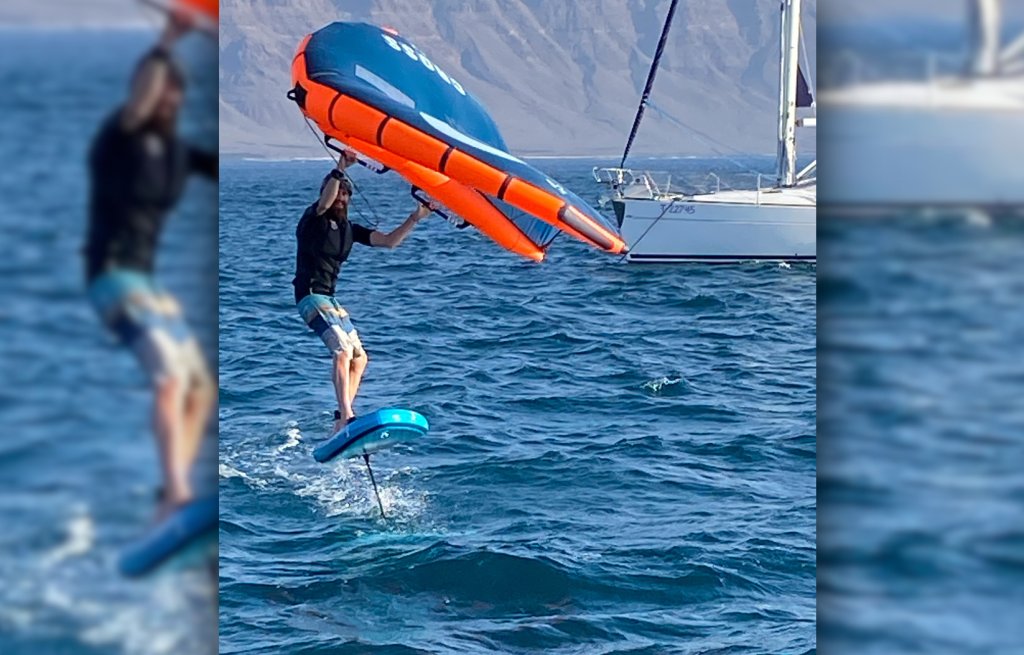
Lanzarote
Welcome to the moon! 🤪 This is roughly what it looks like here. We are thrilled! ❤️🌋 After a lot of back and forth, radioing and phoning, we actually managed to get a place in the marina of Arrecife. It's high season here now 🙈 It's reminiscent of the Balearic Islands, but the prices are about a third of that 😎 The marina is cool, we feel comfortable and will stay here for a few days. As always in a marina, there's a lot to do: cleaning the boat, laundry, engine service, outboard engine service. But we have enough time for this and hire a scooter for the weekend to explore the islands.
Between viticulture and Montañas del Fuego

The Canary Islands are all of volcanic origin, with a new elevation only forming around 270 metres below sea level in 2011. Being 22 million years old, Lanzarote and Fuerteventura are the oldest of the Canary Islands and were once one. Even today, they are only separated by a strait about 40 metres deep and 10 kilometres wide. The last volcanic eruption on Lanzarote took place in 1824. This is still impressively visible today, as new vegetation does not have an easy habitat here: dry climate and little rainfall. Another exciting fact is that the entire amount of sand on the Canary Islands comes from the Sahara. Every year there are sandstorms, known as Calimas, which is south-easterly winds who transport the sand from the desert, just 300 kilometres away, to the islands. We are thrilled by the impressions we have been given here. Nevertheless, we are now moving on, the next island is calling, we are excited! 😎
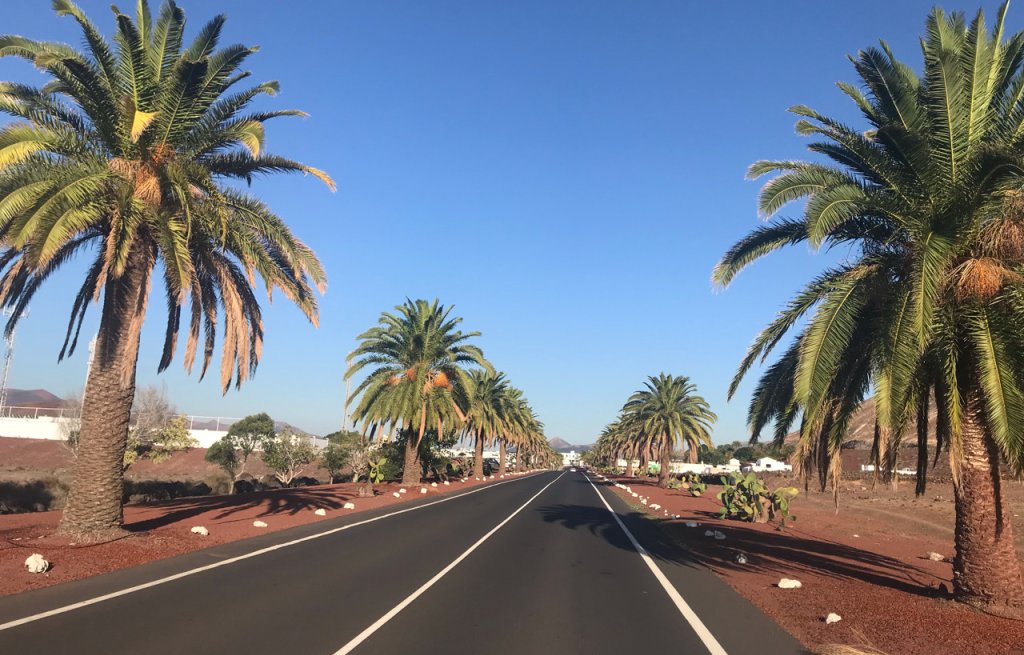
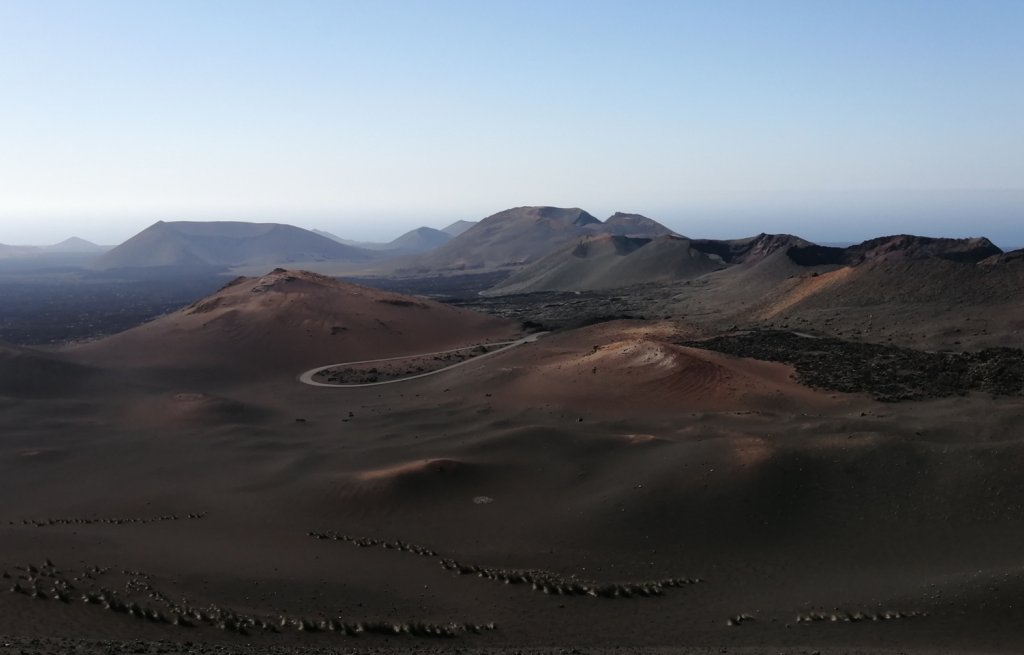
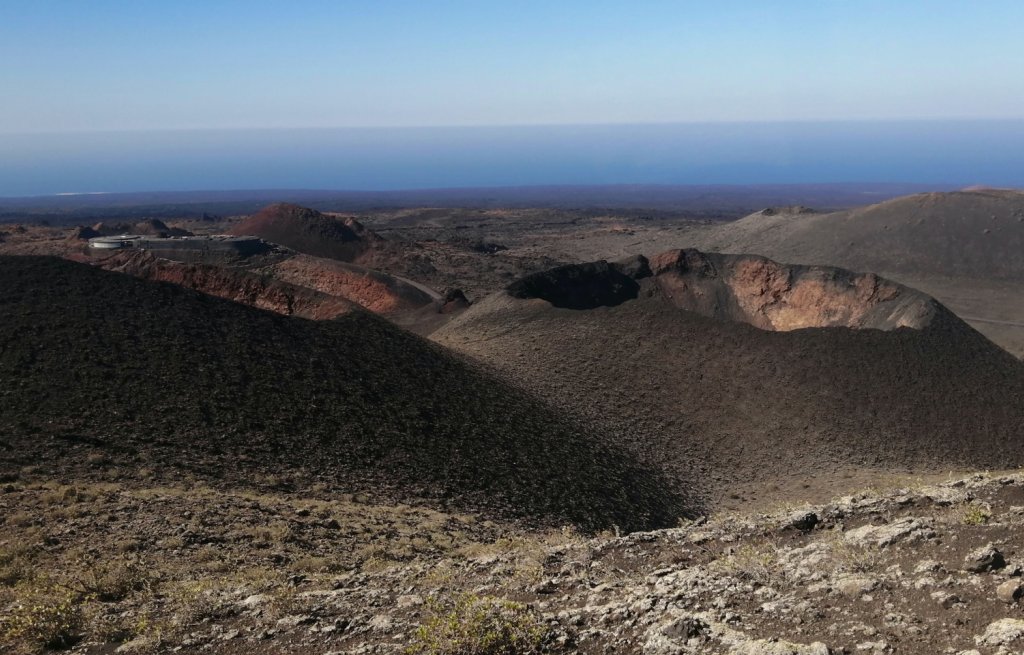
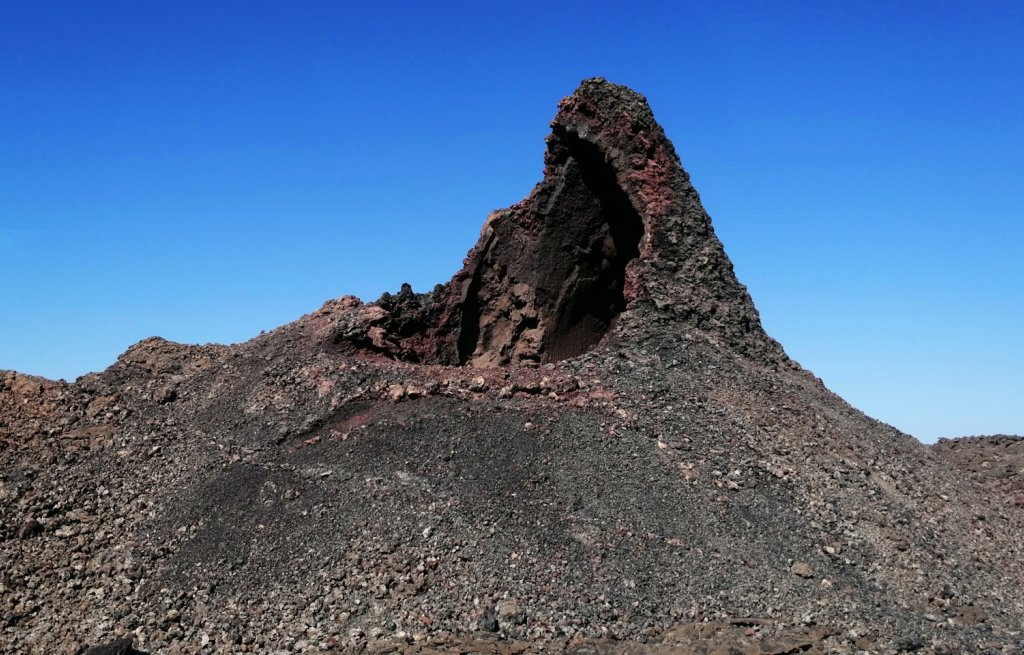

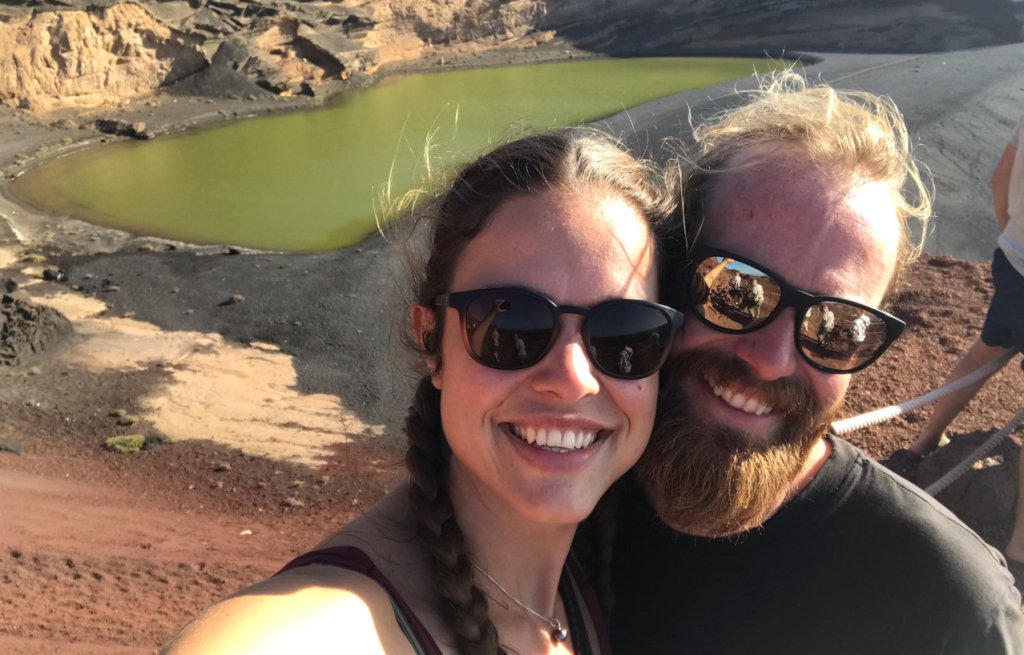
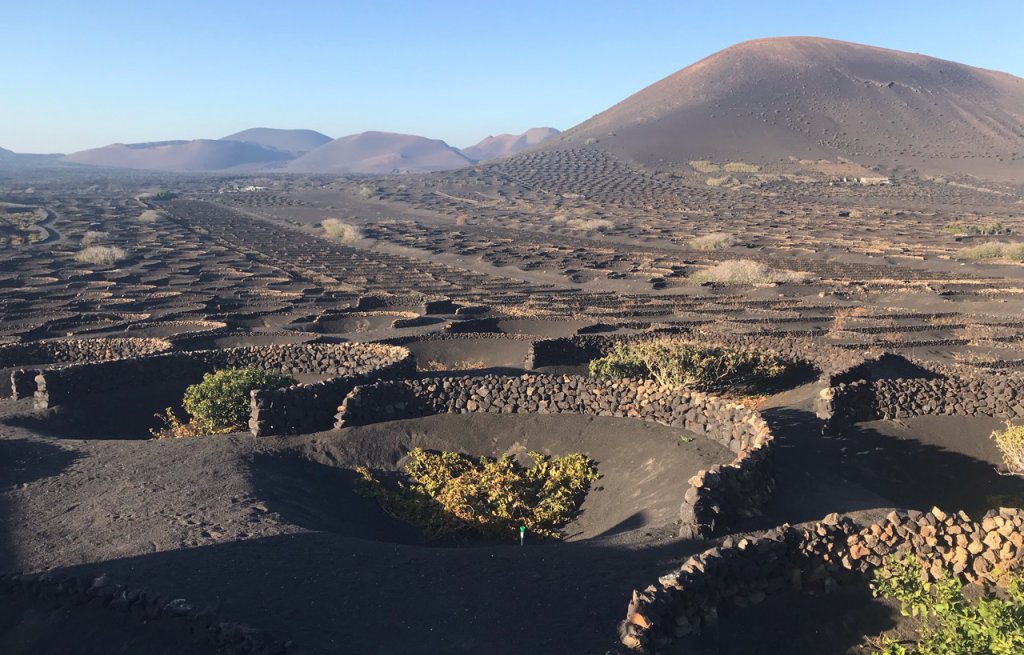
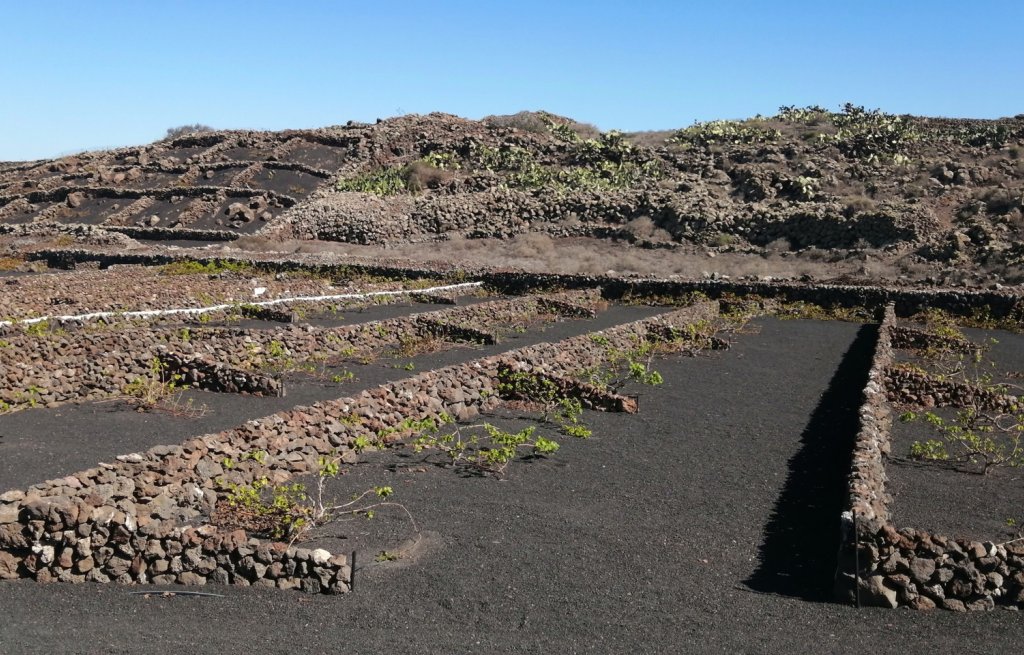
Tenerife
Our next stop is Santa Cruz de Tenerife, and we will be staying here for a while, as the final preparations for the boat are due to be made and our crew for the Atlantic crossing will be arriving here in the next few days.
The crossing was once again very smooth and we arrive at the harbour easily. We rest a little, then it's time for duty! A few boat jobs have to be done before the crew arrives: New battery isolators are installed, and then there's our Starlink dish: we've done it! Although neither of us are super fans of supporting this empire, the advantages outweigh the disadvantages. So we just need to tinker a mount for it somewhere and it's up and running! 😊🛰📡 And now we dare to say: The Cervino is actually ready. All the big boat projects are done, we can actually get started! 🥳🙈 Before the crew arrives and we make the final preparations together, we take some time out and cruise around the island on a scooter (as we often do). Once again, we are amazed by the scenic impressions that present themselves to us. But it's cold! 😂 At 2300 metres above sea level and with a headwind, it can be a bit chilly... 😅😅 We really enjoy the day. Now we're looking forward to the crew and the next chapter of the Atlantic! 🥳🤞🏻
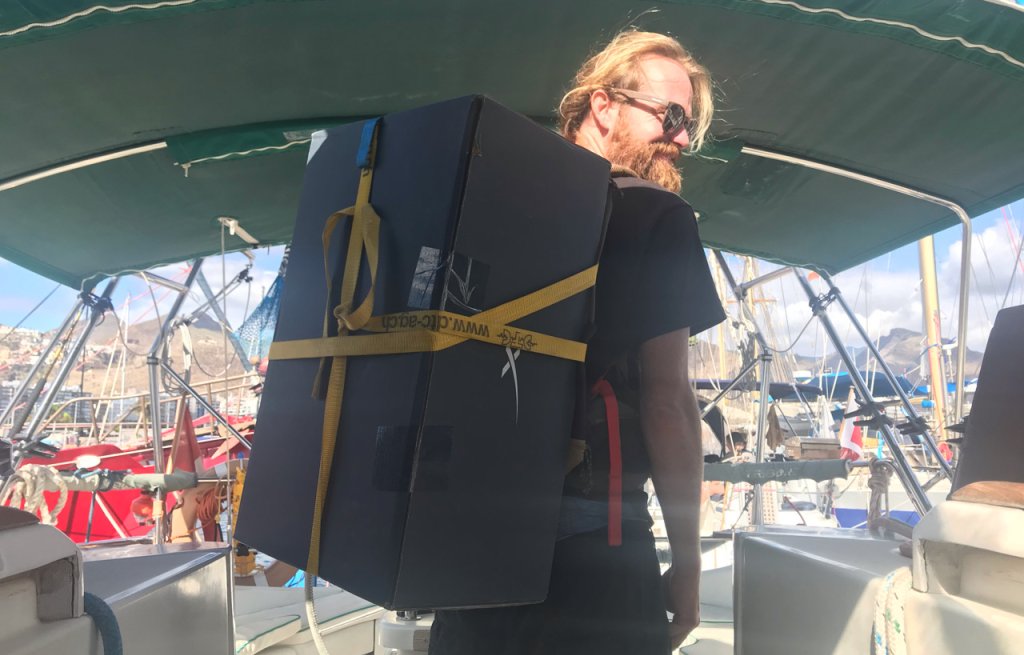
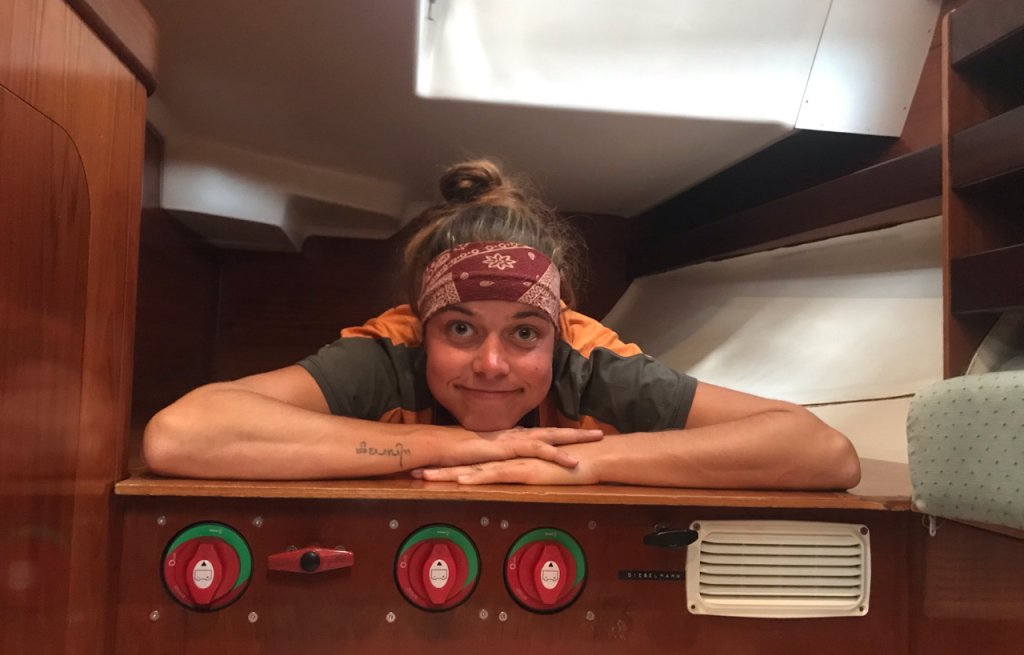
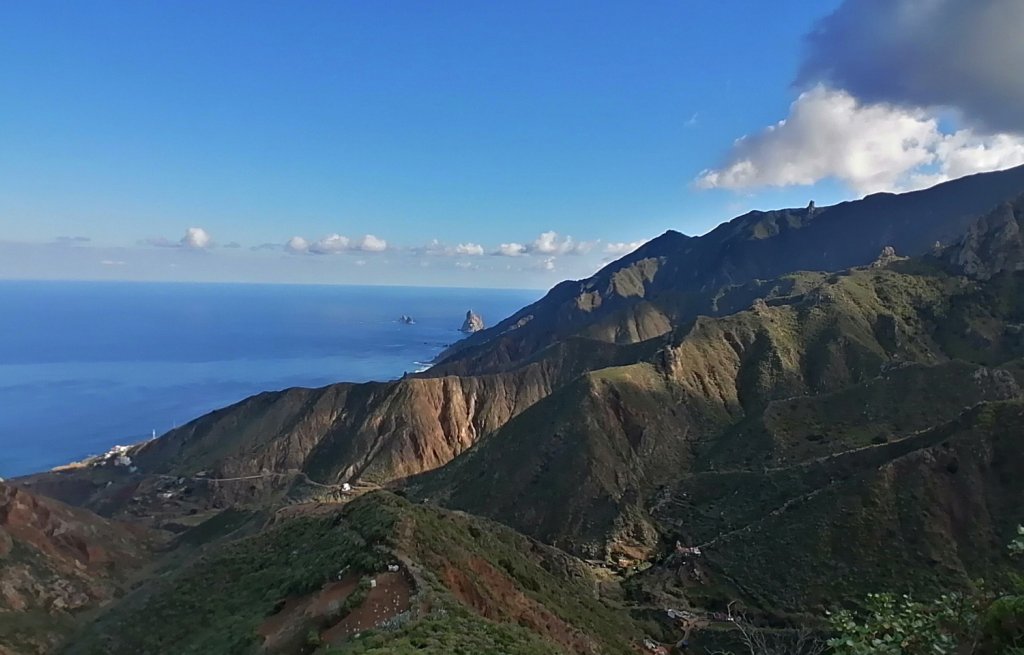
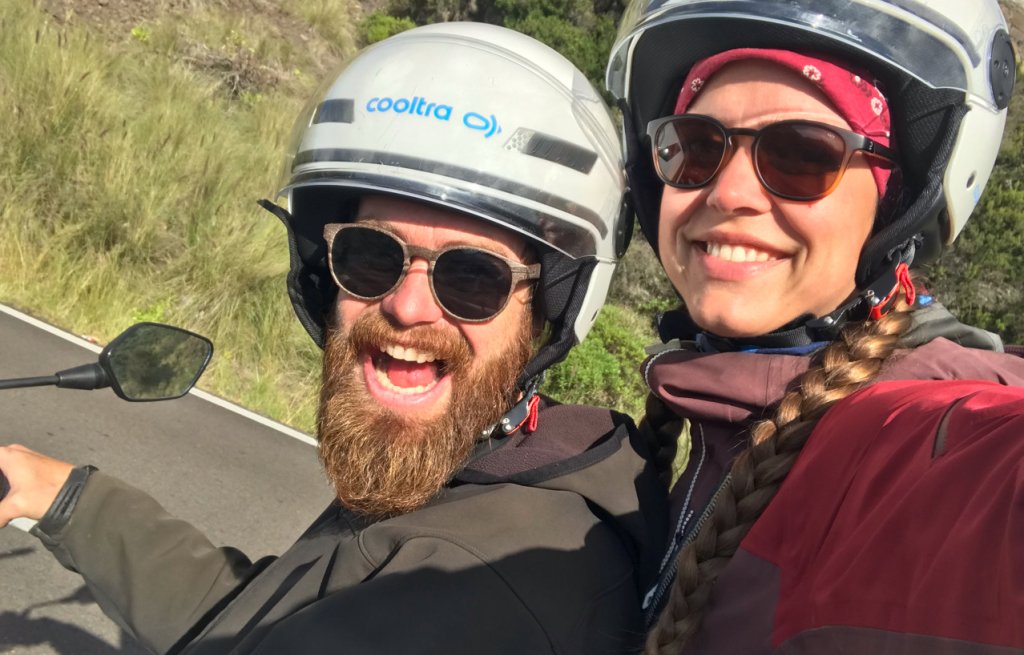
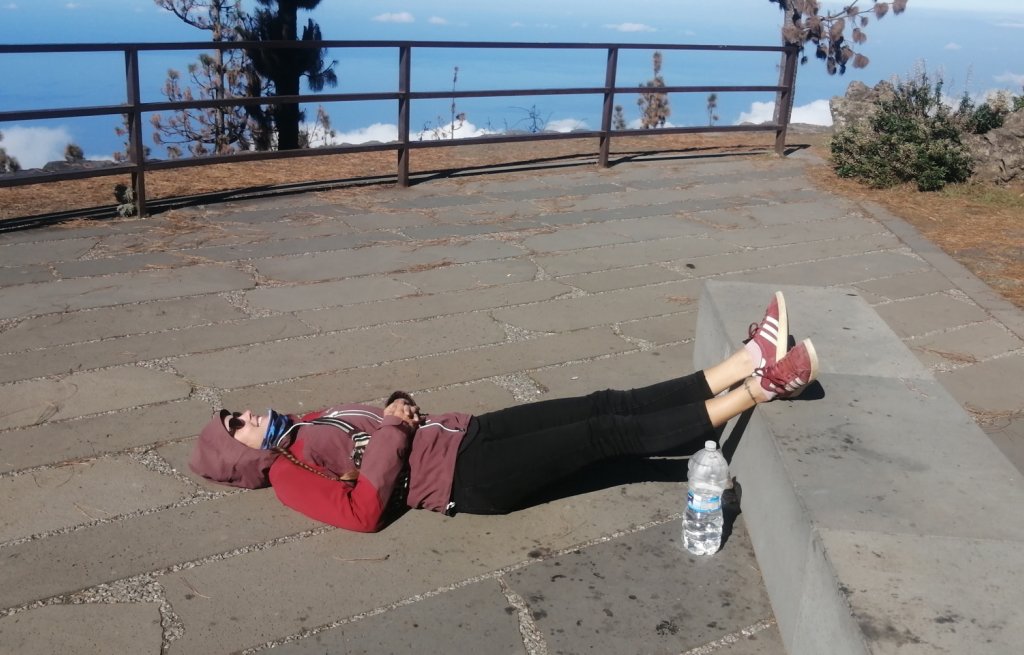
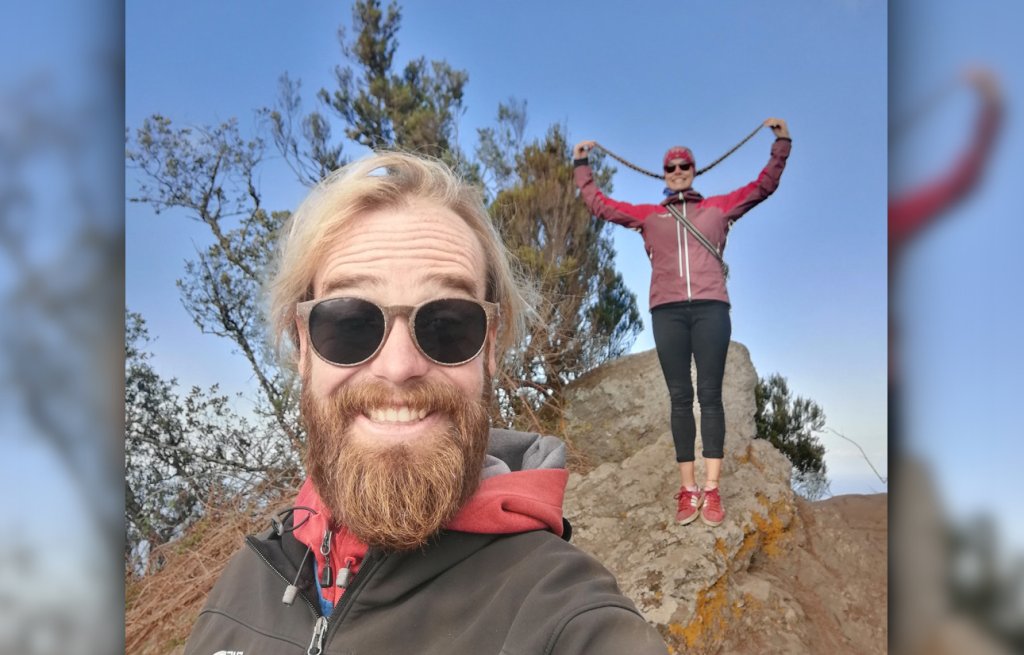
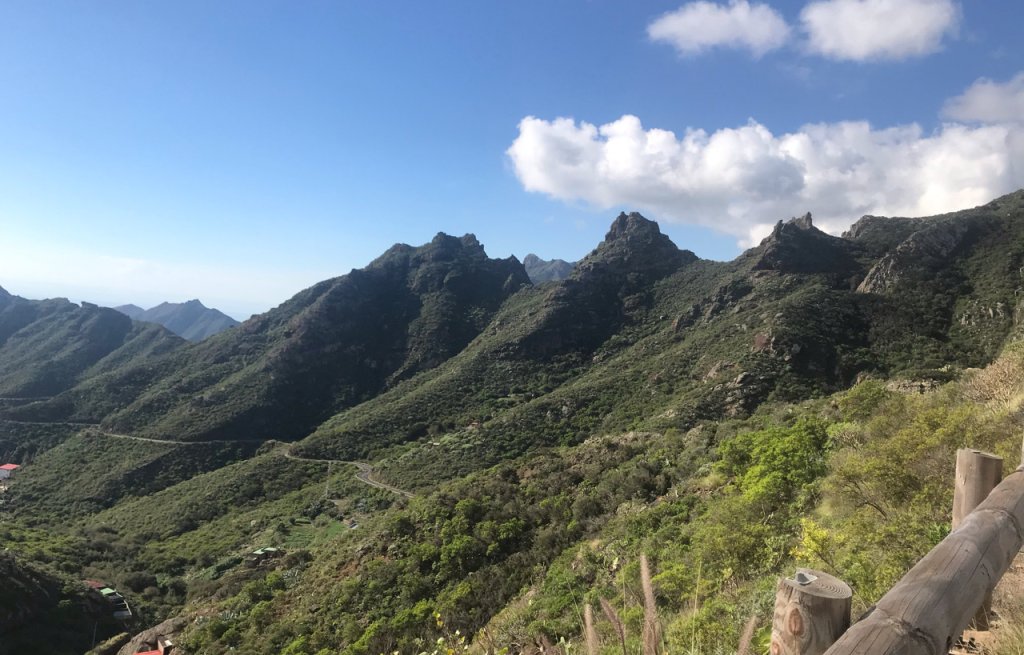
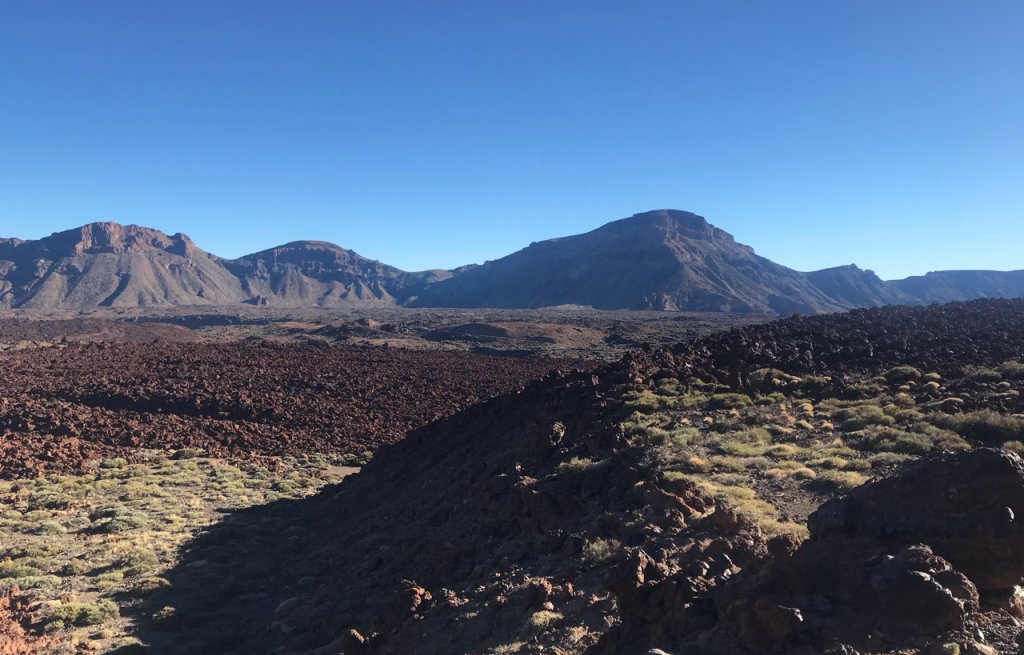

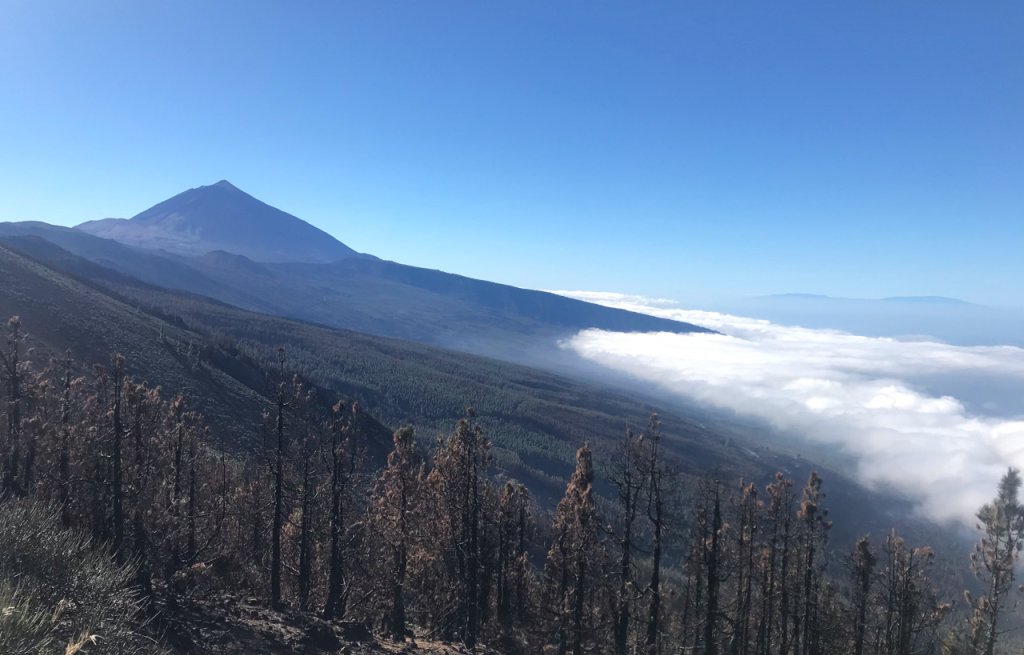
Ready for the Atlantic
Yay yay yay, they're all here!!! 🥳🥳 Our Atlantic crew has arrived! Together we complete the final tasks: Climb the mast, mount the Starlink, stow everything safely and, above all, stock up on provisions! That means looking at what we have, thinking about what we need, shopping and stowing away. Because this will be our last big shopping trip for at least two months 🤪 But 12 hands are much faster than 4, so we do everything on schedule.
And then it's finally time to set off, we untie the lines, I want to lift the anchor at the bow, but it doesn't come up. What? Even after trying back and forth several times, the anchor gets stuck in 17 metres of water. We can't dive down that far either. That's why we don't normally anchor at such depths, but as we had a strong southerly wind last week, the marineros brought the anchor out for us with their motorboat. So we radio them to take the blame for the mess they got us into. They pull wildly on our chain with their motorboat until a big bang occurs.
Our anchor roller is bent and we have cracks in the fiberglass on the bow. And the anchor is still down. What a big pile of sh*t, I can't put it any better. We head back to the jetty and inspect the damage. We can't go on like this. But the weather is going to change and if we don't get out of here soon, we'll probably be stuck here for 10 days. Our morale is being put to the test. To cut a long story short, the evening and the next day look like this: Unscrew the anchor roller and organise a metalworker to fix it. Sand down the fibreglass on the bow and expose the cracks, then apply new layers of fibreglass with epoxy and fill with thickened epoxy once dry. Organising a diver, recovering the anchor plus 50m of chain (that's a lot of weight). Oh wonder of wonders, everything actually works and two days later we are ready for action again with an ugly repaired bow. Aesthetics will have to wait 😅 So the second attempt: we cast off. This time for real .
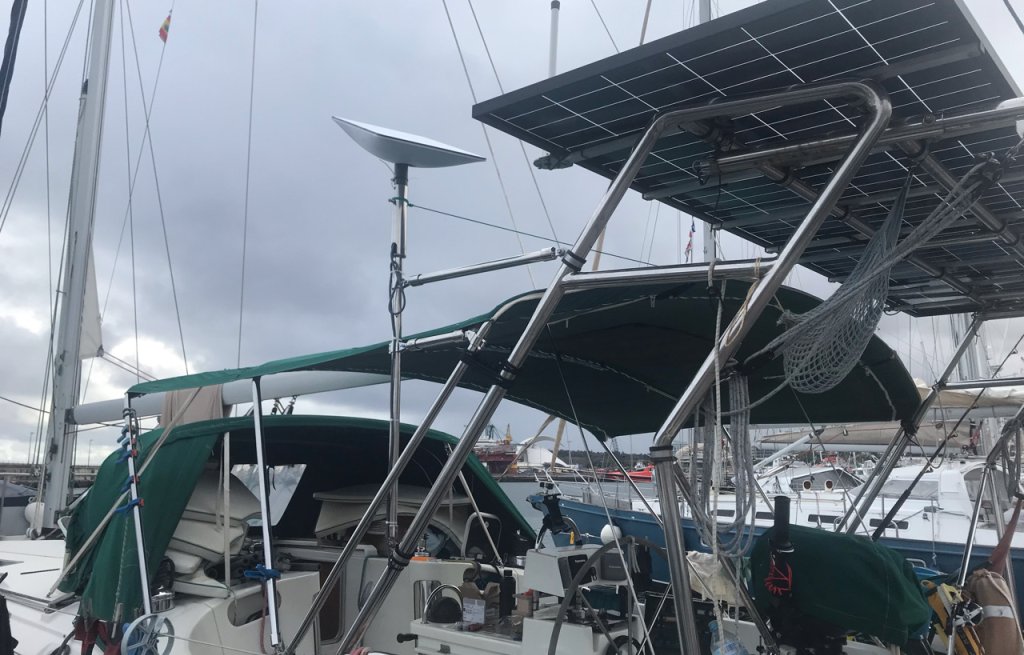

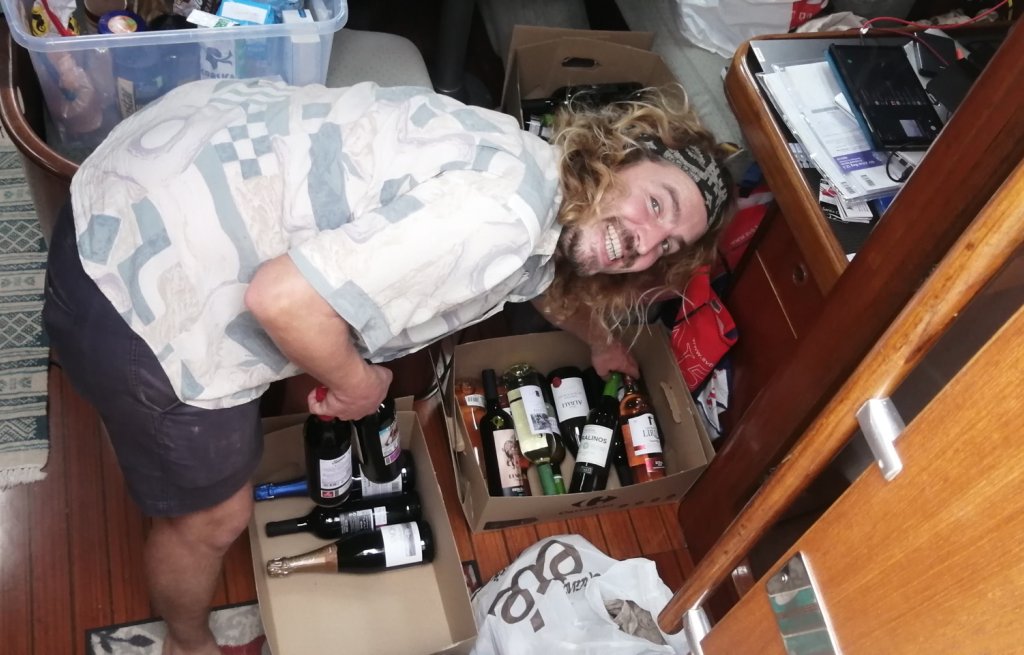
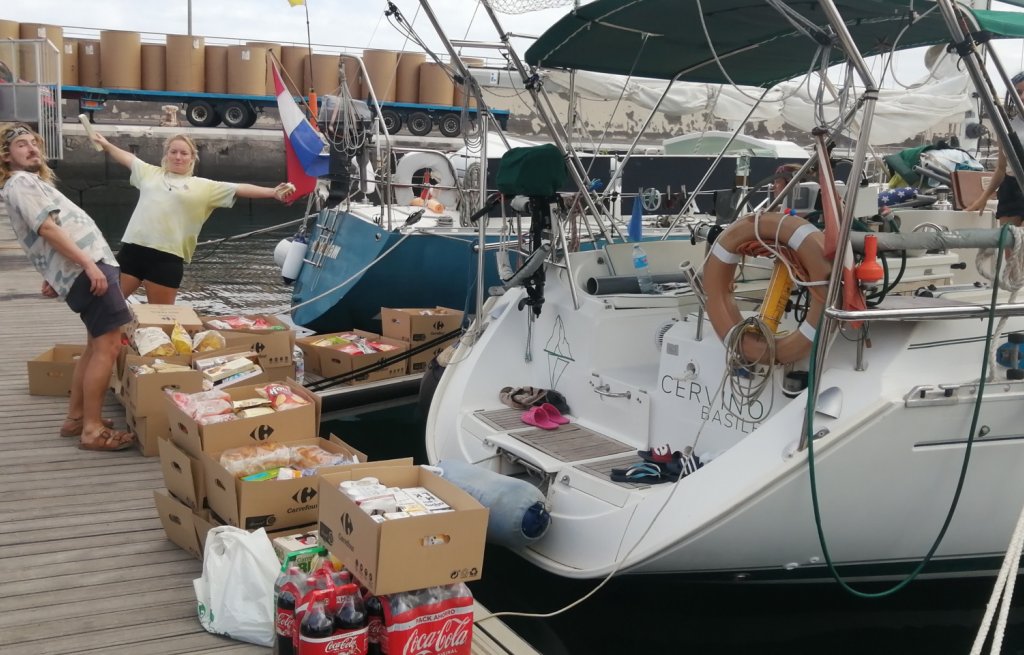

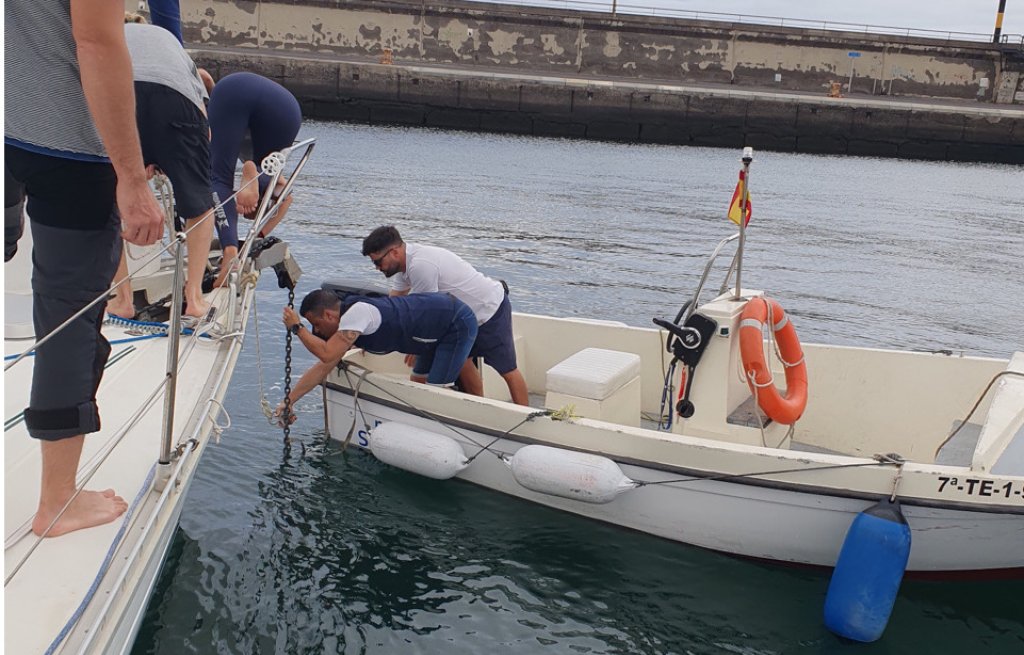
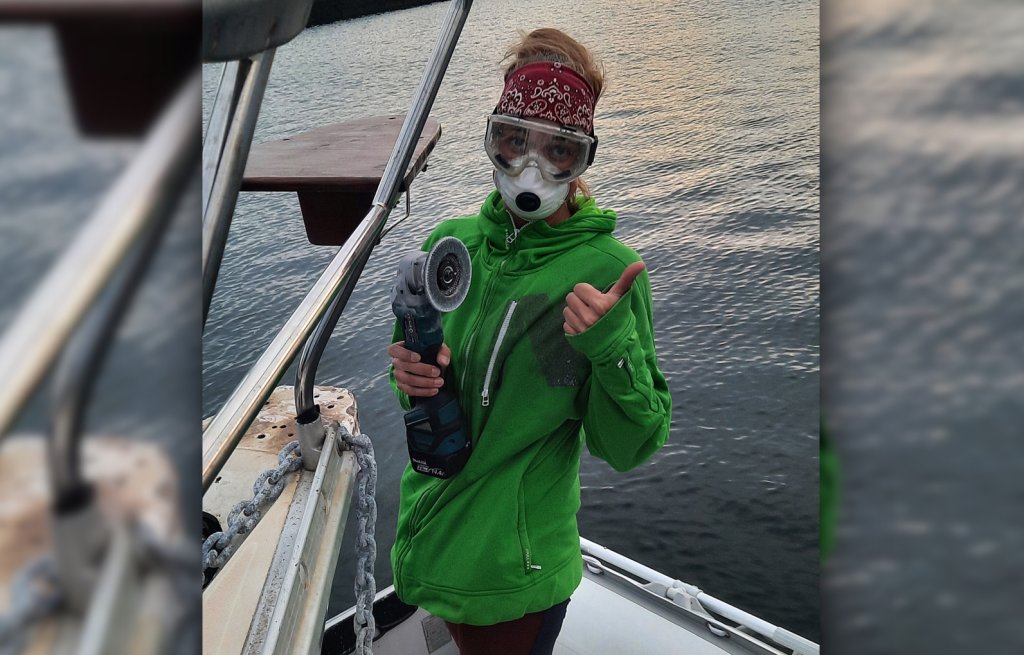
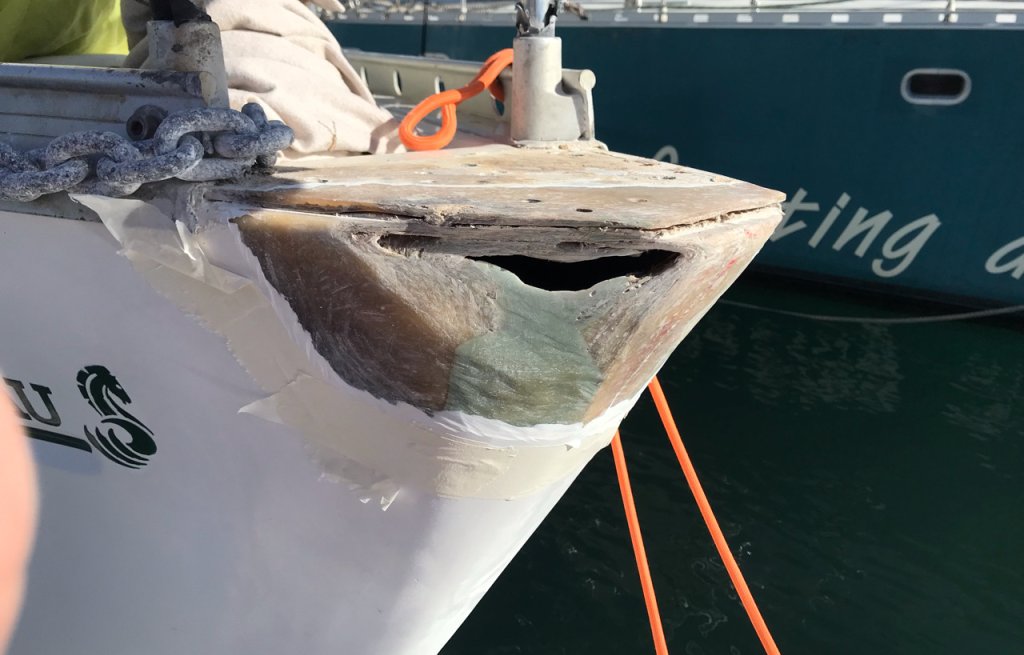
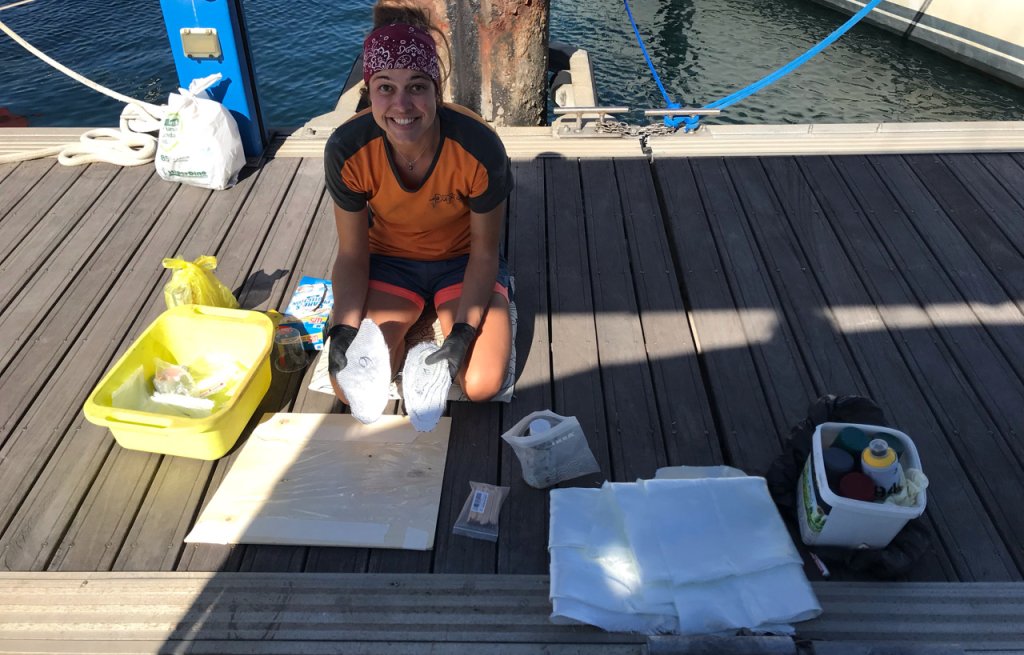
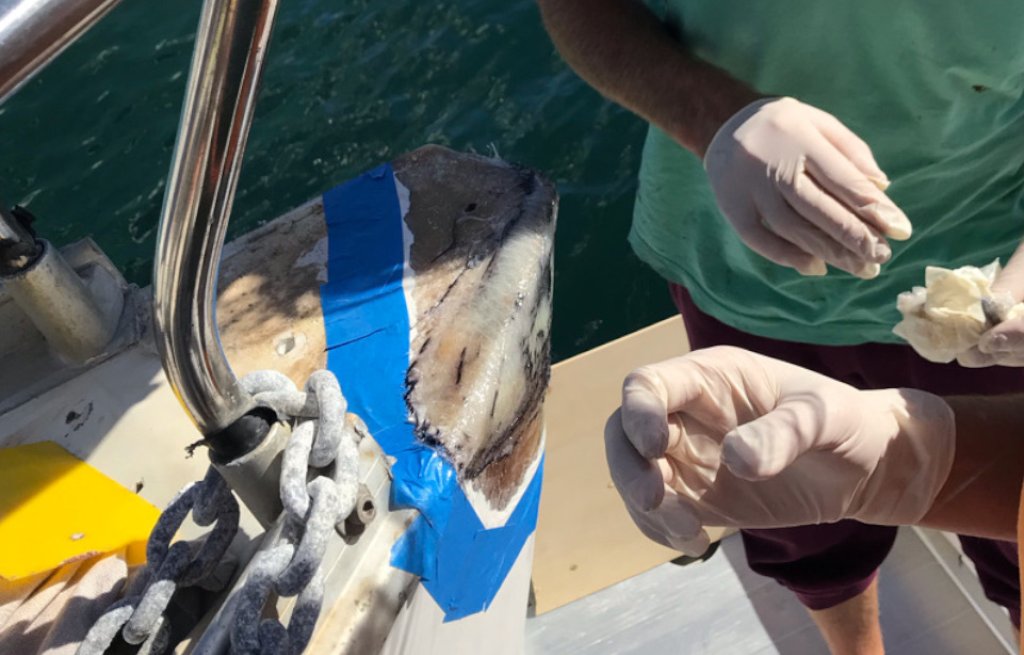
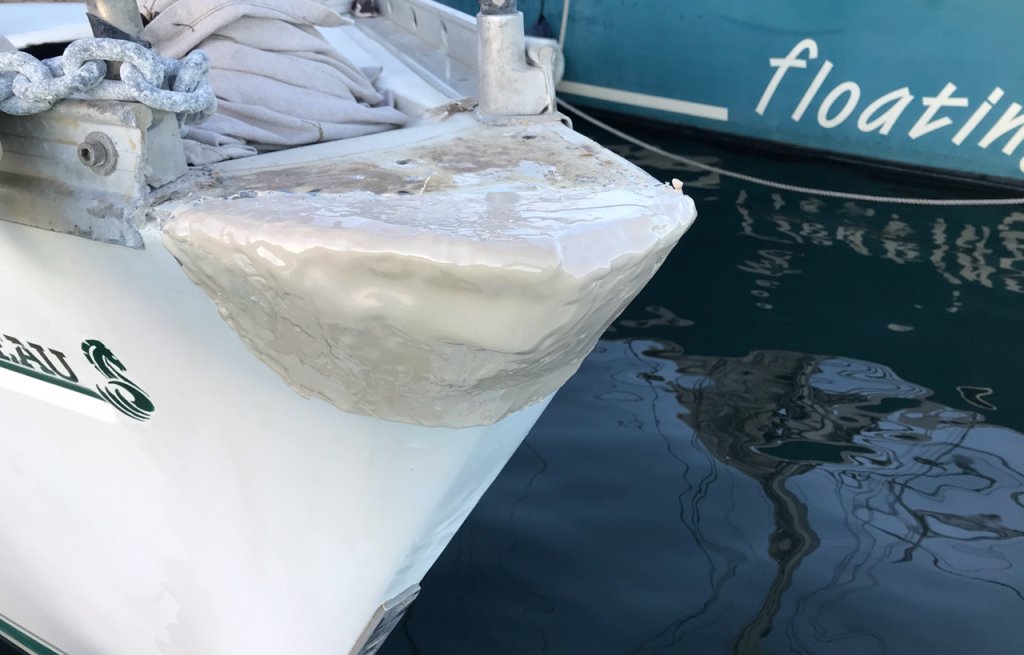
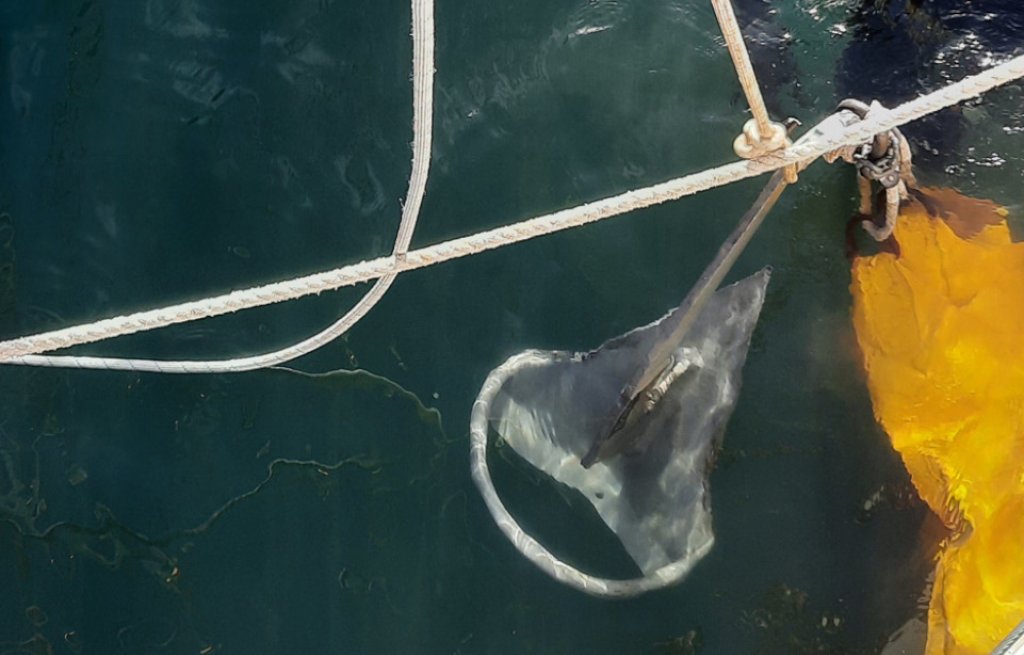
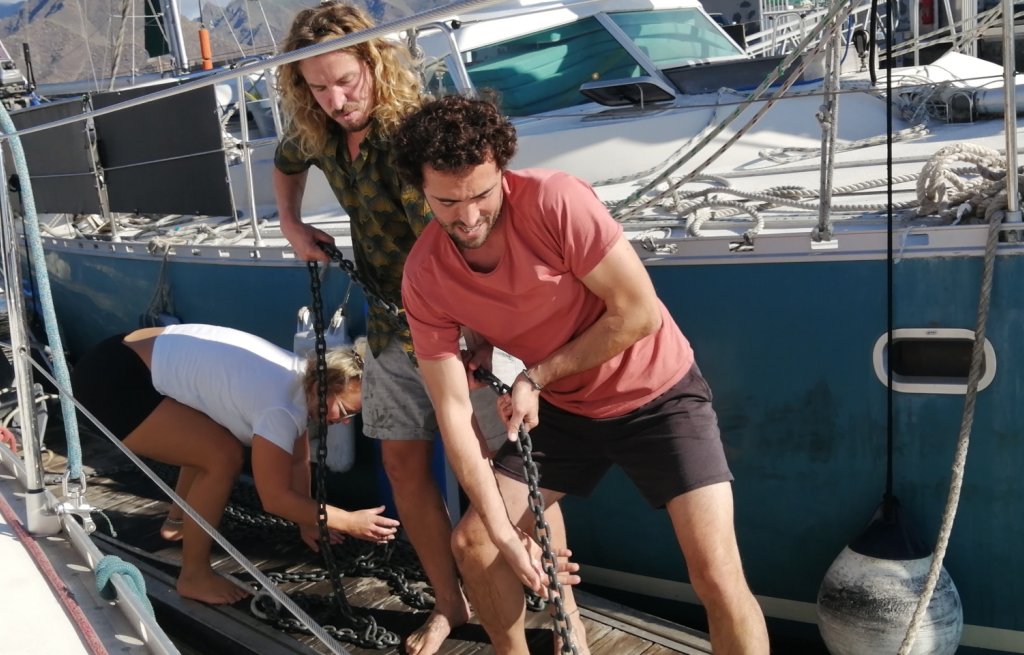
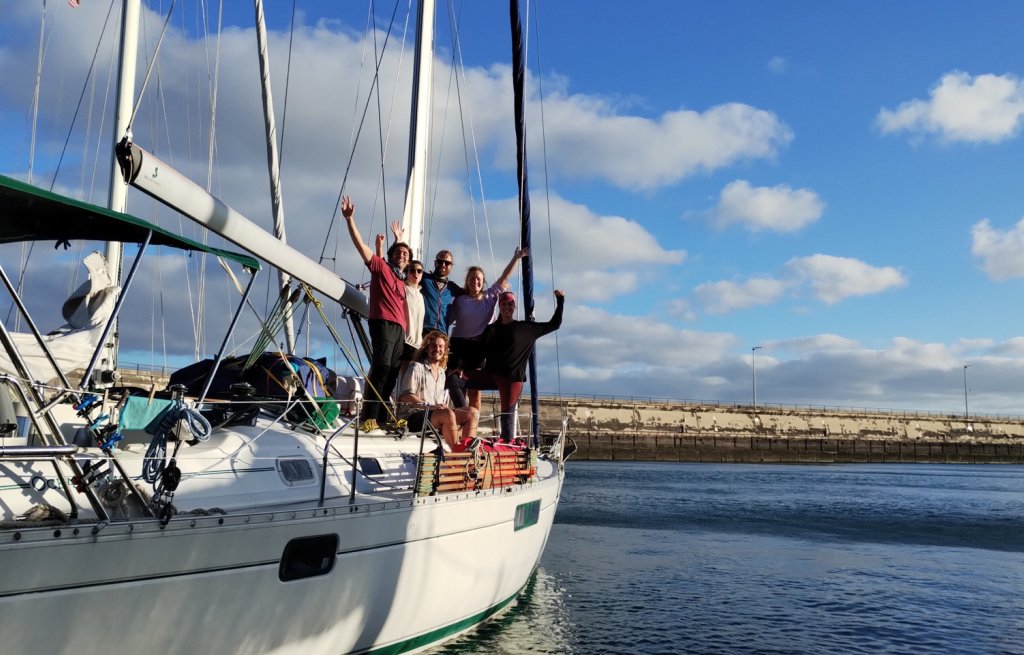
Cape Verde, here we come!